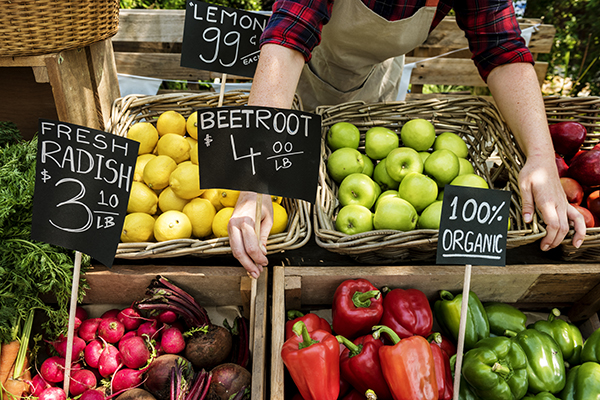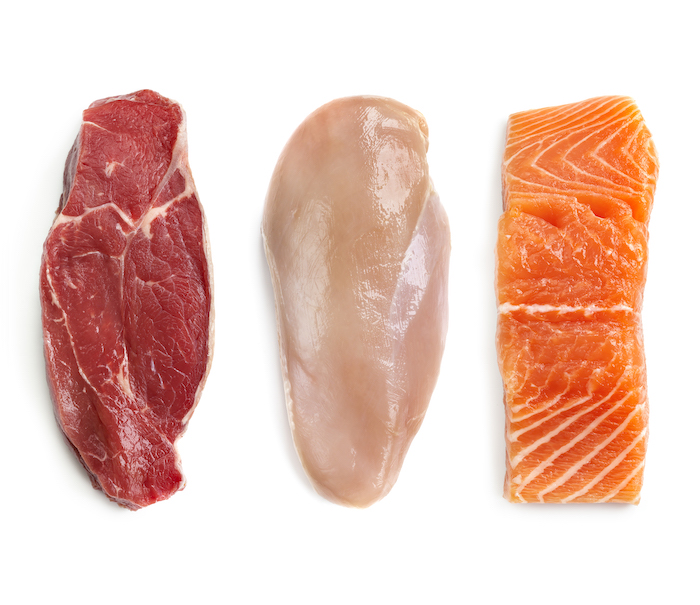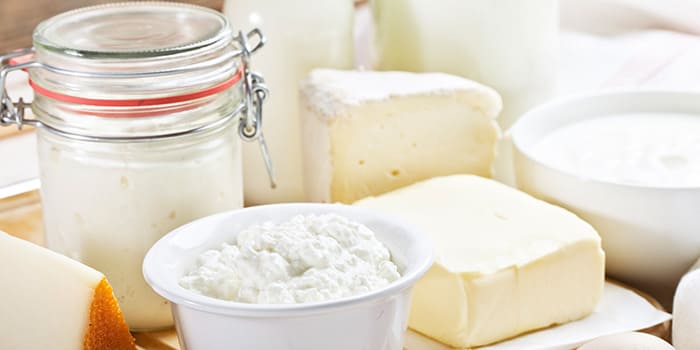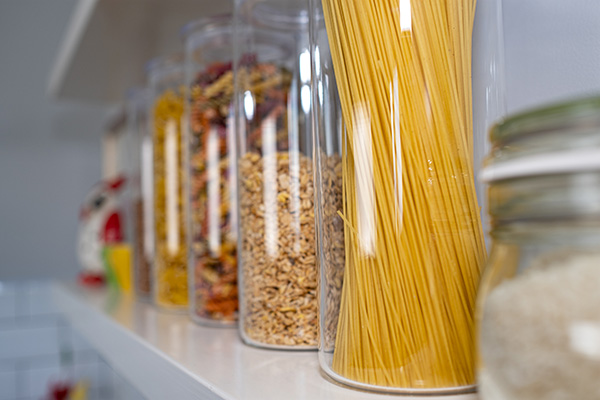The Ultimate Grocery Shopping Survival Guide

Grocery shopping. Everybody’s favorite pastime, right? (Nope.)
Let’s face it, grocery shopping can be intimidating and challenging, and it can feel like a chore. And once you get there, how do you make sure you’re buying the “right” foods?
We all know the basic rules: Don’t shop when you’re hungry, shop on the “outside” (where they stock all the healthy stuff), and go with a list.
But we all have those days when we end up at the grocery store, starving, wandering around aimlessly, without a list.
Don’t panic; here’s how to survive the grocery store, one aisle at a time.
How to Shop for Fruits and Vegetables

First up, fruits and veggies. Make this your first stop. When you fill your cart with colorful produce, there’s less room for things that shouldn’t be in there — like everything in the chip and candy aisles.
When selecting produce, dig deep. If you want your fruits and veggies to be fresh and perky all week long, pick from the back of the pack — the ones front and center are nearing their expiration date and may spoil faster.
And if your pocketbook calls the shots (like it does for the rest of us), spend your dollars wisely by going organic only when necessary. Buying fruits and veggies in season will save you even more dough. But if you’re not in the right season, head for the freezer section: The frozen versions are just as nutritious.
Here are the basics that are always good to have on hand:
- Leafy greens: Pick up romaine, arugula, kale, and spinach. These are multipurpose greens, perfect for salads, smoothies, stews, and more.
- Bananas: This is a versatile fruit that can be used in a variety of recipes, depending on its stage of ripeness. Riper bananas can be easier on the digestive system, but underripe bananas may be better for you. (Gluten-free banana bread, anyone?)
- Apples, pears, and oranges: These are great for a quick, healthy snack on-the-go.
- Berries: Blueberries, raspberries, strawberries — these sweet workhorses are essential to have for snacking or healthy shakes.
- Avocado: Skip the mushy ones. If you can gently press into the skin and it gives back, it’s ripe and ready to eat. Stuck with one that’s not quite ready? Take it home and ripen it faster than Mother Nature can.
- Bell peppers: Red, green, or yellow, these are a base ingredient in many healthy recipes.
- Onions and garlic: Like bell peppers, this dynamic duo appears in more recipes than you can shake a stick at, so don’t get caught empty-handed!
- Mushrooms: You can stuff them, sauté them, or toss them in an omelet. Or add them to soups, pastas, stews, casseroles… you get the idea.
- Broccoli and cauliflower: These old-school veggies of our childhood are now the new “bread” — use them to make pizza crust, “toast,” tots, breadsticks, and more.
How to Shop for Meat and Seafood

In general, when it comes to protein, choose cuts of meat with “loin” or “round” in the name; these are the lean cuts. For ground meats, choose at least 93 to 95 percent lean. Ground turkey should be 99 percent lean. Keep in mind beneficial fats in salmon and tuna are on the good list!
Here are some other in-the-know tips from the pros:
- Talk to the butcher and ask questions; you may just find yourself privy to VIP treatment. Find out what cuts are super fresh and ask for the best way to cook them. You can even request for meats to be ground fresh for you.
- Serving a family of one or two? Cut down on food waste by getting it cut to your preferred portion.
- Stay away from textured soy protein products and stick with tofu and tempeh — and make it organic to avoid GMOs.
- If you want deli meat for a quick lunch or snack, choose nitrate-free, low-sodium, and less-processed varieties.
- In a rush? Pick up a rotisserie chicken — just make sure it’s a plain version instead of one with sauces that could be sweetened with sugar. To keep things lean, discard the fatty skin.
- Canned tuna and salmon are a bargain when it comes to seafood. They’re easy to prepare and rich sources of omega-3 fatty acids. Buy tuna and salmon canned in water instead of oil.
- Fresh-caught fish shouldn’t have an odor, so if it’s super smelly, pass it up or go for frozen, which is often a better price, too.
How to Shop for Eggs and Dairy

The options in the egg and dairy aisle can be dizzying: cashew milk, almond milk, free-range, brown/white, extra-large eggs, and on and on. For both eggs and dairy, there are plenty of arguments on both sides of the organic vs. conventional debate, but here are some general guidelines:
- If you’re a dairy drinker, choose whole or 2-percent milk, which can be more satiating than skim or nonfat; the same goes for cheese.
- If you’re looking for protein without the dairy, soy milk is your best friend because most other nut milk alternatives are actually poor sources of protein. Nut milks are tasty and lower calorie, but make sure you go with the unsweetened versions.
- When it comes to cottage cheese, Greek yogurt, and ricotta cheese, 2-percent or low-fat can help keep protein high and your overall fat intake low. When it comes to yogurt, avoid brands with added sugar and go for plain and unsweetened.
How to Shop for Pantry Items

- Go for raw, unsalted nuts. All nuts are a great source of heart-healthy fats, fiber, vitamins, and minerals. Skip the packaged nuts and head for the bulk aisle to save money and only get as much as you need.
- Stock up on brown rice, quinoa, faro, or {insert your favorite whole grain here}. These healthy basics can be used in an endless number of recipes.
- Peanut butter or almond butter, take your pick. But check the ingredient list: It should only list nuts. (A little salt is OK.) Many store-bought butters contain added sugars and hydrogenated oils. Better yet, buy some nuts and make your own nut butter at home.
- Any and all kinds of dry or canned beans (unsalted, please!). Toss them into a stir-fry or make a comforting soup because beans just may be the secret to longevity.
- If you’re cooking with heat, coconut oil, sesame oil, and regular olive oil do the best job. Extra-virgin oils have a lower smoke point (translation: they burn at high temperatures), so save them for dressings and as a finishing oil. Check out this essential guide to oils.
- Skip processed white sugar; raw honey or 100-percent pure maple syrup are where it’s at. But remember: They’re both still pure sugar, so moderation is key.
So the next time you find yourself at the grocery store without a plan, stick with these basics and you’ll never go home with bags of junk food ever again!
